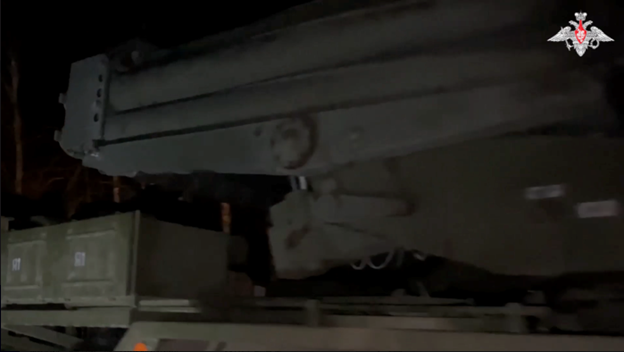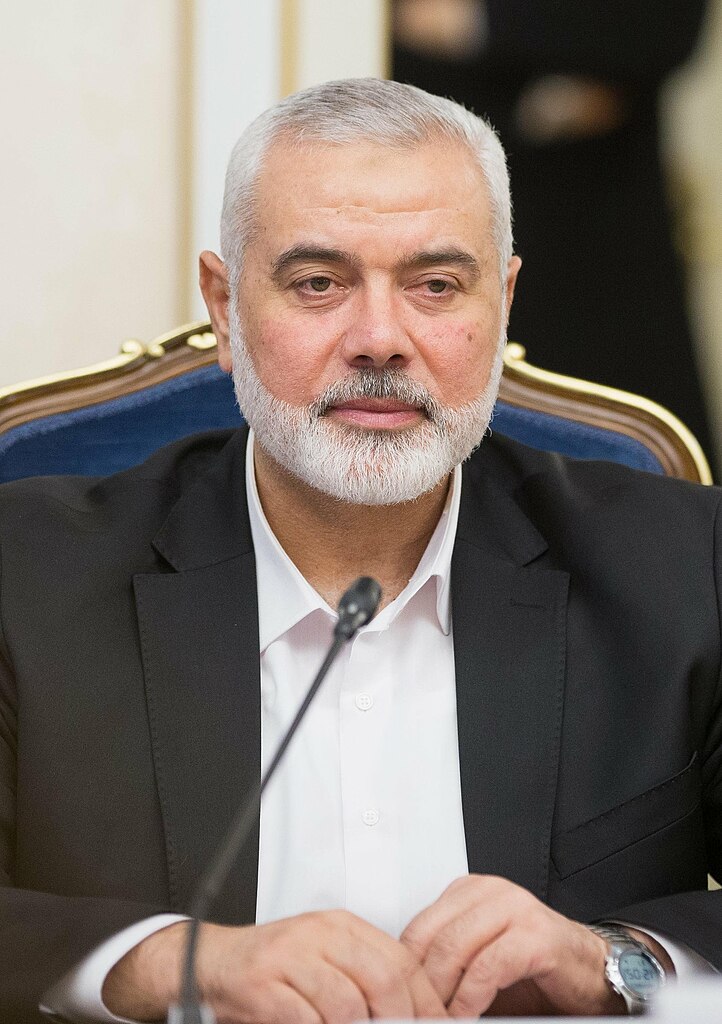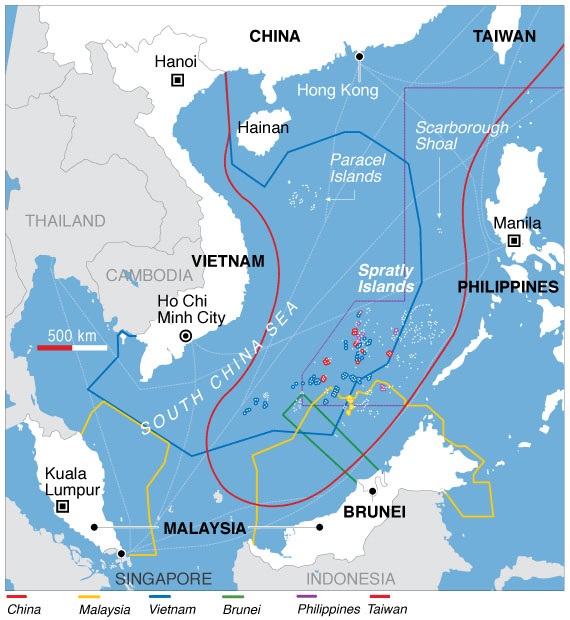
103rd Mobile Brigade of Belarus, BTR-ZD [R1] tank with an installed ZU-23-2[R2] . Belarus has recently mobilized parts of its military along Lithuanian and Polish borders.
“A situation has been created where there is not yet a war today, but the enemy prepares for one. Our actions demonstrate our determination to protect our country. We are prepared to protect our homeland.”
Belarus has mobilized 5,000 reserve troops to conduct extensive military training along two NATO borders, according to the first excerpted article from the state-run news agency Belarus Today. The first site is located along the border of Lithuania, seven miles from the Lithuanian capital city Vilnius, near the Belarussian village Grodzie. The second training site sits along the Polish-Belarussian border in Brest. Additionally, the Belarussian Ministry of Defense reports that its 19th Mechanized Brigade and the 120th Anti-Aircraft Missile Brigade are fully combat-ready. Belarus Today also reports that Defense Minister Viktor Khrenin stressed that Belarus cannot react calmly to the growing threats and militant rhetoric of its neighbors and that Belarus must learn from its history and apply the lessons learned to the modern day. The minister further emphasized that although Belarus is monitoring the situation, the defense ministry will not hesitate to act in defense of its homeland. The Belarus Today article reports that Defense Minister Khrenin noted that the function of these combat readiness checks is to “train military personnel, improve issues of combat and mobilization preparedness, and to improve skills operating on unfamiliar terrain.”[i] Among the delivered supplies, the Belarussian Ministry of Defense showcased T-72B [R1] tanks and BMP-2 [R2] armored vehicles.
The second excerpted article from the prominent Polish public news service Polskie Radio 24 describes these training movements as “disturbing” with soldiers simulating realistic combat situations with large quantities of heavy military equipment being stationed on the frontier with NATO. The exercises were noted to be in response to NATO exercises in nearby nations, according to Deputy Minister of Defense General Viktor Gulevich. Belarus’s recent military activities suggest the nation may be actively preparing for a wartime footing to engage in armed conflict by training and improving military readiness, or that the nation is utilizing its military to posture, understanding the close watch the NATO border states of Lithuania and Poland maintain. While the exact intentions of these exercises are unclear, in either scenario, these movements bear monitoring.
OE Summary Insight:
BLR mobilizes an extensive network of military personnel and equipment to complete combat readiness checks and training along the borders of LTU and POL.
Sources:
“Хренини: Вооруженные Силы Беларуси повышают уровень проверок боеготовности (Khrenin: The Armed Forced of Belarus increase the level of combat readiness checks),” Belarus Today (Belarussian state-run media outlet), 26 March 2024. https://www.sb.by/articles/khrenin-vooruzhennye-sily-belarusi-povyshayut-uroven-proverok-boegotovnosti.html
There are increasing challenges and threats, and we are increasing the level of checks. According to the scale carried out, this check is one of the largest. The 19th Mechanized Brigade and the 120th Anti-Aircraft Missile Brigade are on full combat readiness. Nearly 5,000 reserve soldiers are taking part in these events (combat readiness checks).
“Today we are seeing many challenges and threats growing. It is the militant rhetoric which is heard from our neighbors. We cannot, of course, treat this calmly because we have learned our lessons from the history of our time,” stressed Viktor Khrenin.
Concerning combat readiness checks, (they are being) held in order to train military personnel, improve issues of combat and mobilization preparedness, and to improve skills operating on unfamiliar terrain.
“Therefore, units did not go to the training ground, but to real places, real routes, and real borders. The tasks (these places) fulfill are educational. For them a situation has been created where there is not yet a war today, but the enemy prepares for one. Our actions demonstrate our determination to protect our country. We are prepared to protect our homeland,” stressed the minister (Viktor Khrenin).
“We must watch and track the situation. If needed, (we are) determined to act. We will not stand on ceremony if we experience provocation. This is our main task,” added Viktor Khrenin.
“Niepokojące ruchy białoruskich wojsk. Ćwichzenia tuż przy granicy z Polską (Disturbing movements of Belarusian troops. Exercises right next to the border with Poland),” Polskie Radio 24 (Polish national public-service radio broadcasting network), 21 March 2024. https://polskieradio24.pl/artykul/3353184,niepokojace-ruchy-bialoruskich-wojsk-cwiczenia-tuz-przy-granicy-z-polska
The squadron of the 115th Anti-Aircraft Missile Regiment of the Belarussian Army is conducting tactical exercises at the “Brest ” training ground, informed the Ministry of Defense of Belarus. The “Brest” training ground is located near the border with Poland.
Soldiers shoot at training targets, operating in a situation as close to combat conditions as possible. The Ministry of Defense emphasized that the units take into account the experience of the Russian army in the war in Ukraine.
The exercises are part of the control of the combat readiness of the Belarusian armed forces, which has been carried out for 10 days, mainly in the western part of the country. Deputy Minister of Defense and Chief of the General Staff, General Viktor Gulevich, stated at the beginning of this operation that it was being carried out as a reaction to military exercises of NATO countries near the borders of Belarus.
…Railway transports carrying elements of the 19th mechanized Brigade of the Belarusian Armed Forces arrived in Ashmyany in the Grodno Oblast, Belarus. A total of 50 wagons with soldiers and military equipment.
The amount of equipment delivered corresponds to an incomplete mechanized Battalion reinforced by a tank company. These are four passenger cars with staff, three covered wagons with equipment and ammunition and 39 platform wagons…Ashmyany is located just over 50 km from the capital of Lithuania, Vilnius. The arrival of the transport at the station there was confirmed by the Belarussian Ministry of defense. The resort even published photos, among others T-72B tanks and BMP-2 to armored vehicles. After unloading, the equipment will go to the position scheduled for inspection. The field camp where the Belarusian soldiers with equipment will stay is to be located near the village of Grodzie, 12 kilometers from the border with Lithuania.
Notes:
[i] Belarussian opposition website Belarusian Hajun Project, which reports on the movements of the Belarussian military within Belarus, noted 50 rail cars-worth of soldiers and equipment arrived at the Lithuanian-Belarussian border for inspection and combat readiness checks. For more, see: “Large-scale combat readiness inspection, drills with the territorial defense, and rearmament of the army: review of the main military events in Belarus in March,” Belarusian Hajun Project, 14 April 2024. https://hajun.info/analytics/large-scale-combat-readiness-inspection-drills-with-the-territorial-defense-and-rearmament-of-the-army-review-of-the-main-military-events-in-belarus-in-march/
Image Information:
Image: 103rd Mobile Brigade of Belarus, BTR-ZD [R1] tank with an installed ZU-23-2[R2] . Belarus has recently mobilized parts of its military along Lithuanian and Polish borders.
Author: Serge Serebro
Source: https://en.wikipedia.org/wiki/Armed_Forces_of_Belarus#/media/File:Btr-d_Belarus.jpg
Attribution: CC BY-SA 3.0








.png)
